I was wondering how to present my butterflies and moths to you. And I chose the method. We have created small collections that are part of the exhibitions we prepare.
And if you need a gallery of butterflies in which your favorite color predominates? Or maybe a collection inspired by the design on the wings is important to you: delicate or maybe strong, or maybe you like sparing black and white patterns? So we will create special collections for you.

Butterflies are found on all continents except Antarctica and each region can boast the beauty of its most beautiful specimens. There are butterflies that are absolutely unique because they only occur in a specific, small part of our Globe. They are of course under very strict protection.
Most species of butterflies live in the tropical regions of the world. A large part of them has already been described by scientists and all of us can admire these exhibited in scientific works, books, at museum exhibitions, in private galleries, butterfly houses… But there is still a lot to do in this topic. Unfortunately, not all countries in the tropics of the world carry out scientific research in the field of biology, so the process of learning about new species is difficult…
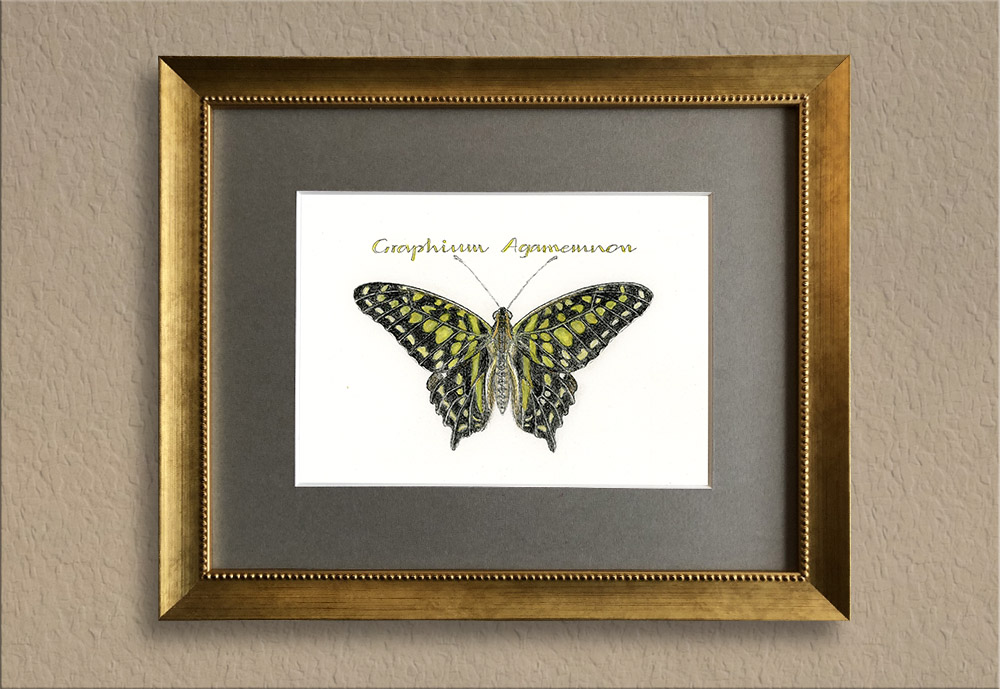
Australia
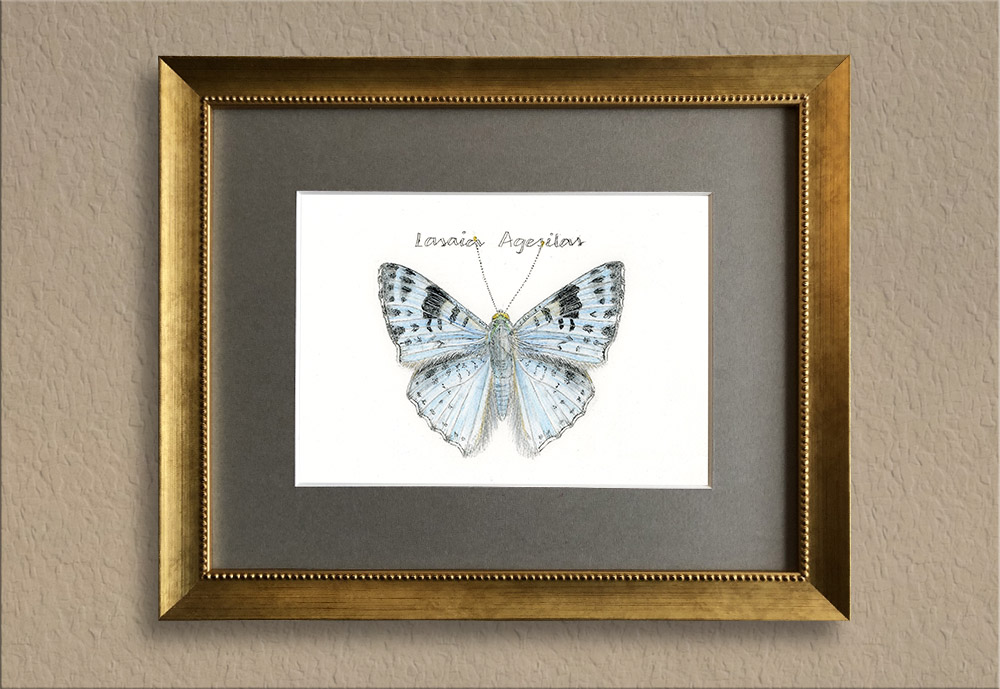
Latin America

Asia
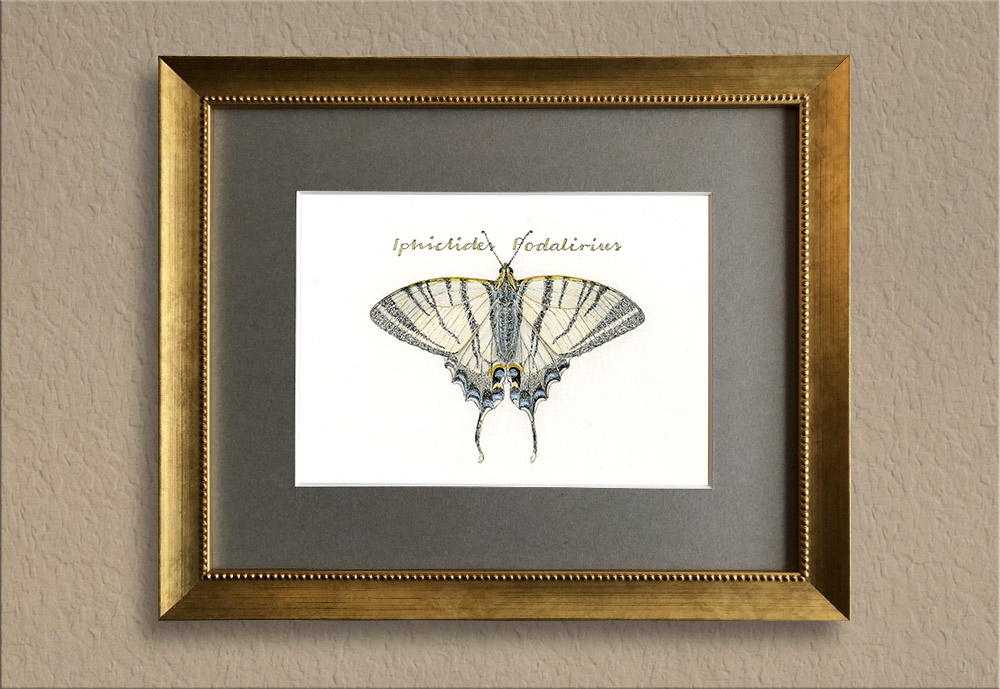
Europe
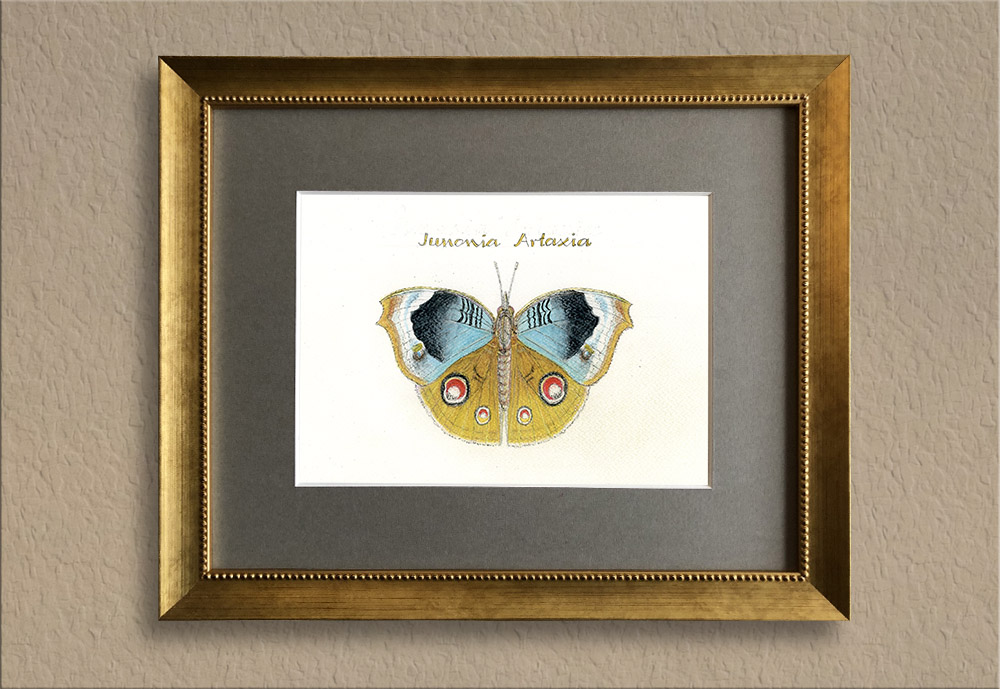
Africa
-15%

North America

If I were to assess the artistic value of the most beautiful moth specimens, I would say that it is a masterpiece. Their form, design, color are often so unpredictable, the whole is so sophisticated, mysterious… And just like in the case of butterflies, I can be content with scientific, museum and photography knowledge, so I have to see some moths alive…
Most moths, like butterflies (I wrote about it in the presentation of the Butterflies of the World collection), occur in the tropical regions of our Globe, which are the most difficult to discover new species. What will the scientists surprise us with, what extraordinary specimen of the moth, what extraordinary work of art of Mother Nature…?
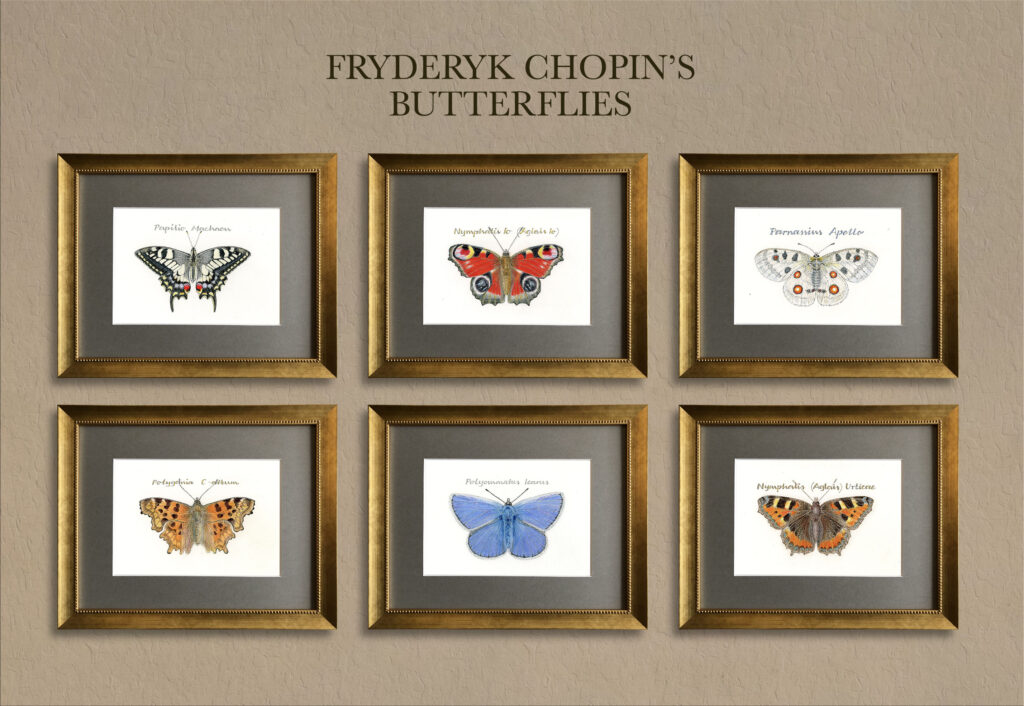
I am Polish, so the first my collection was of course Fryderyk Chopin’s Butterflies.
What kind of butterflies could delight little Fryderyk in Żelazowa Wola, and what butterflies could he meet then in his adult life? Which beautiful butterfly could have inspired Fryderyk Chopin to write his great musical works…?

Every part of the world has butterflies commonly known as peacocks. They borrowed peacock eyes to decorate their wings and became exceptionally beautiful and very elegant, classic… They became dignified, like a peacock that flirting with its chosen one spreads its tail showing its unquestionable beauty, becoming its symbol…

We have already selected the beautiful butterflies of Europe for the Chopin Collection, so when presenting the Collection of Europe Butterflies, I will stop at the most famous butterfly of the Old Continent, Papilo machaon, and I will also show its caterpillar, also beautiful and also famous…
And here a few words about the transformations in the butterfly’s life. It all starts with the female laying eggs, from which caterpillars hatch at the appropriate moment for a given species. In my opinion, they are all unusual, even the ones that seem like grey. But some of them are as sweet as children’s toys, others are predatory like from a science fiction movie, and in various combinations of colors, they surprise with their beauty. Because they are always intriguing! As they would like to say: wait for this most perfect form of a butterfly, for its imago. And the caterpillar sheds its cuticle, turning into a motionless form, a seemingly unattractive cocoon inside which unusual processes take place. It is in it that a wonderful adult butterfly forms and comes out of it. And so this beautiful Papilo Machaon caterpillar, which I present, heralded a dignified butterfly with a wingspan of up to 10 cm, which decorates the nature of Europe.
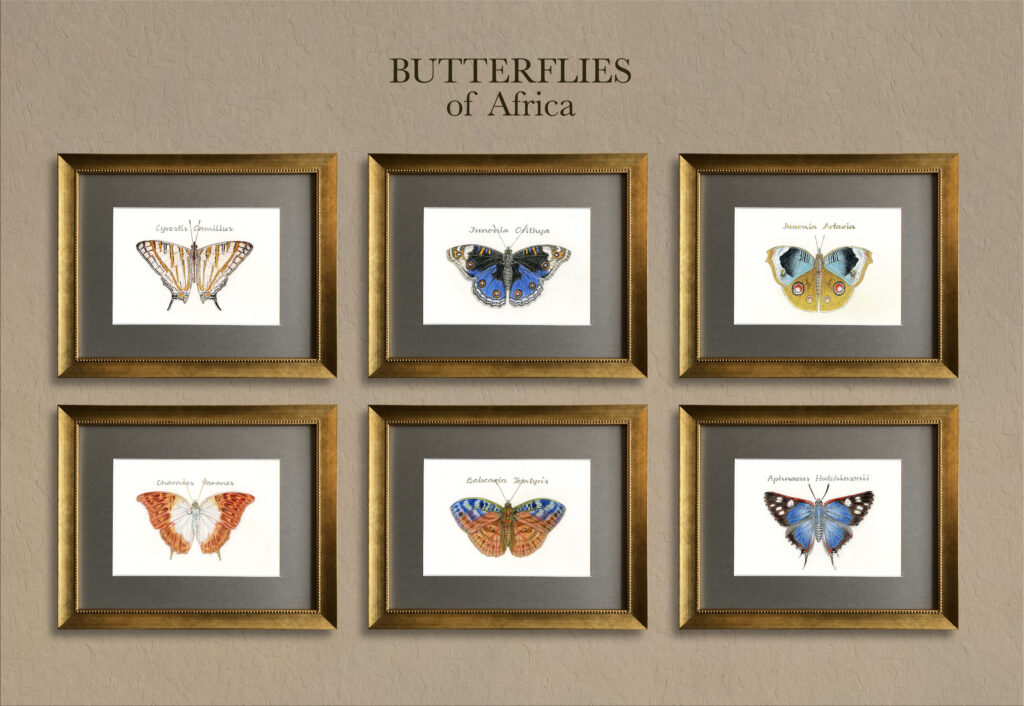
If someone asked for one butterfly from Africa, it would be Babearia tentyris, from the very heart of this continent. Beautiful, different, his beauty will always defend itself.
In Africa, national parks and nature reserves are impressive, where each species lives in natural conditions and there is respect for its life. When I was looking for Babearia tentyris, I found it in the Kakum National Park in Ghana. It is a great facilitation for all educational activities, for scientific cooperation in the field of nature. And Africa, due to its climate, has such an enormous wealth related to nature, it is a pity that not all countries can afford such activities…
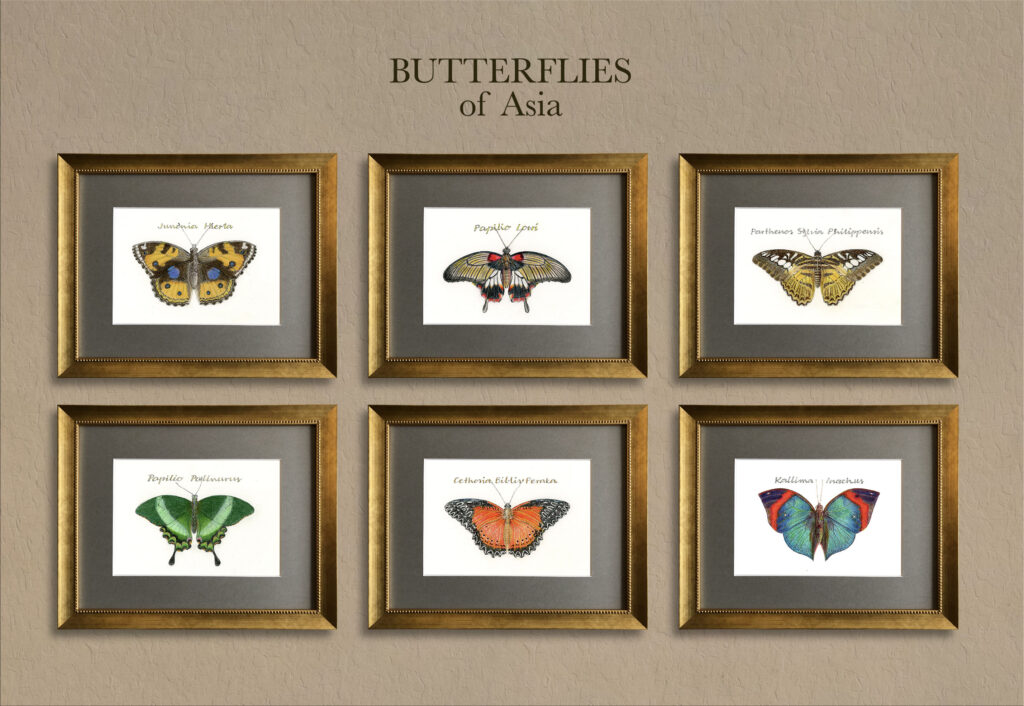
Asia is a huge continent and very diverse. Put simple, its northern and central parts, due to the climate, can boast butterflies similar to those that live in Europe. However, butterflies from the southern and south-eastern parts are completely different. When I show Asian butterflies to my friends, everyone wants a green Papilio palinurus butterfly. I am asking why? Because I think there are such butterflies there. And I will tell this way . Painting butterflies from all over the world, I manage to recognize a butterfly from Asia, because its shape and color are very distinctive and often unheard of in other parts of the World.
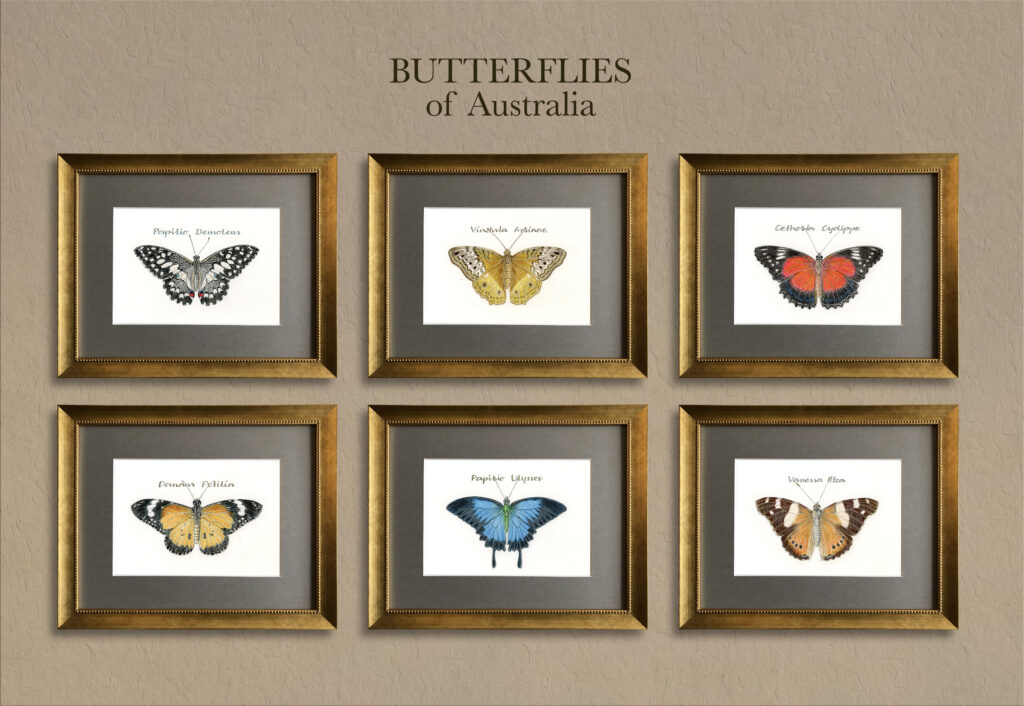
Presenting Butterflies of Australia, I would like to draw your attention first of all to those butterflies who have chosen only this separate part of the World. It is mainly Papilio ulysses called Blue Mountain Bitterfly, with a wingspan of up to 14 cm, which boasts the title of one of the most beautiful butterflies in the World. But my favorite is amazing, beautifully colored Cethosia cydippe, with a wingspan of 7-8.5 cm. In the genus Cethosia there are as many as fourteen species spread from India to Australia, but Cethosia cydippe, the eastern red lacewing, is only found in Australia, New Guinea and the surrounding islands…
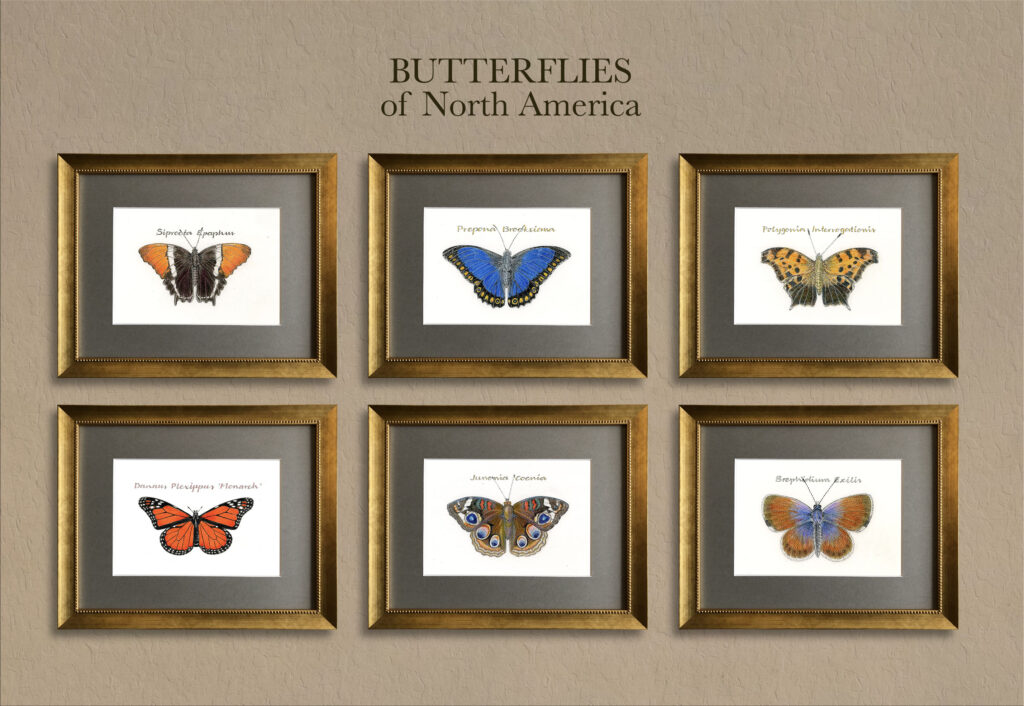
North America it is primarily the famous Monarch – Danaus plexippus – the strongest butterfly in the World. These delicate butterflies with a wingspan of 7.5-10 cm, like the birds, migrate in autumn in groups from North to South, to California, to Mexico, covering a distance of up to 3,000 km. And after the spring awakening, they return home. It is very unusual and how beautiful… But what does a human do? He destroys nature, which through migration serves as food for these brave butterflies!
In North America, you can also meet a tiny, beautiful butterfly – the western pygmy blue – Brephidium exilis, which is considered to be the smallest butterfly in the World, it’s wingspan may be just over 1 cm.
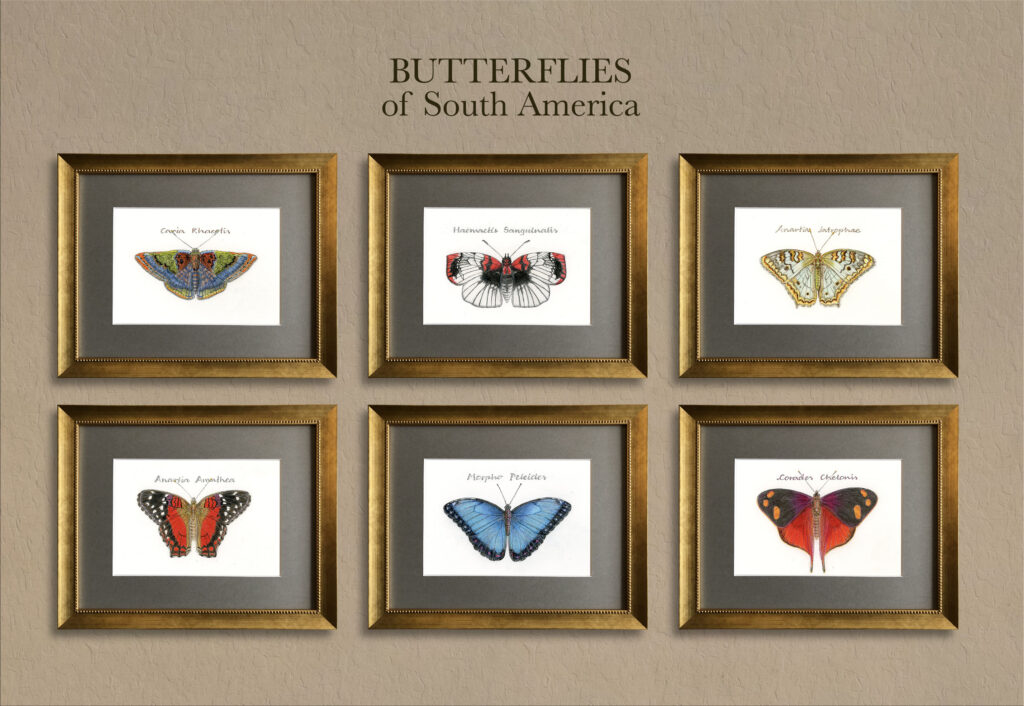
In South America, above all, the unusual climatic conditions of the Amazon basin and the beautiful mountains of the Andes provide a unique wealth of butterfly species. My favorite butterfly is Caria rhacotis, a member of the Caria genus of extraordinary beauty, which contains some of the most beautiful and elusive species of butterflies on Earth. I will always associate it with the exoticism of Peru, because when I painted it, I saw traditional Peruvian clothes…

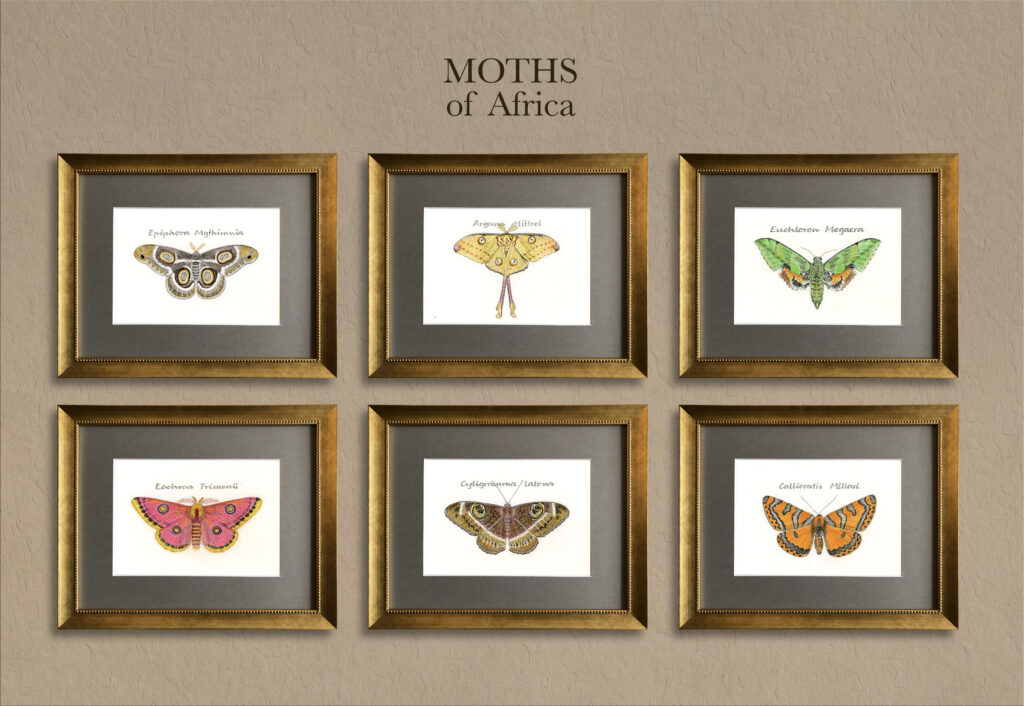

Presenting the Moths of Asia, we must say first of all about famous Attacus atlas – one of the three largest moths in the world, with a wingspan of up to 30 cm. Its unusual color, size and shape of wings with tips resembling snake heads make it the most frequently presented moth in Butterfly Museums and private farms. In its natural habitat, it can be seen in Southeast Asia, South China and Indonesia. It’s an interesting fact, that Attacus atlas is one of those moths that, in their most beautiful adult form, do not consume any food, are focused only on extending the species…
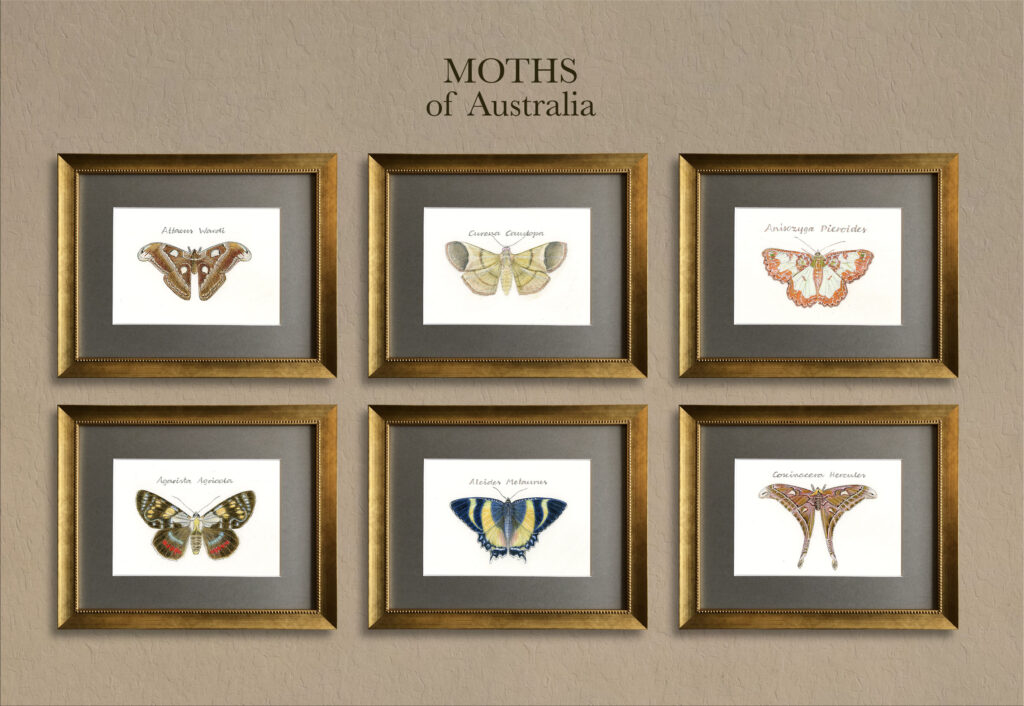
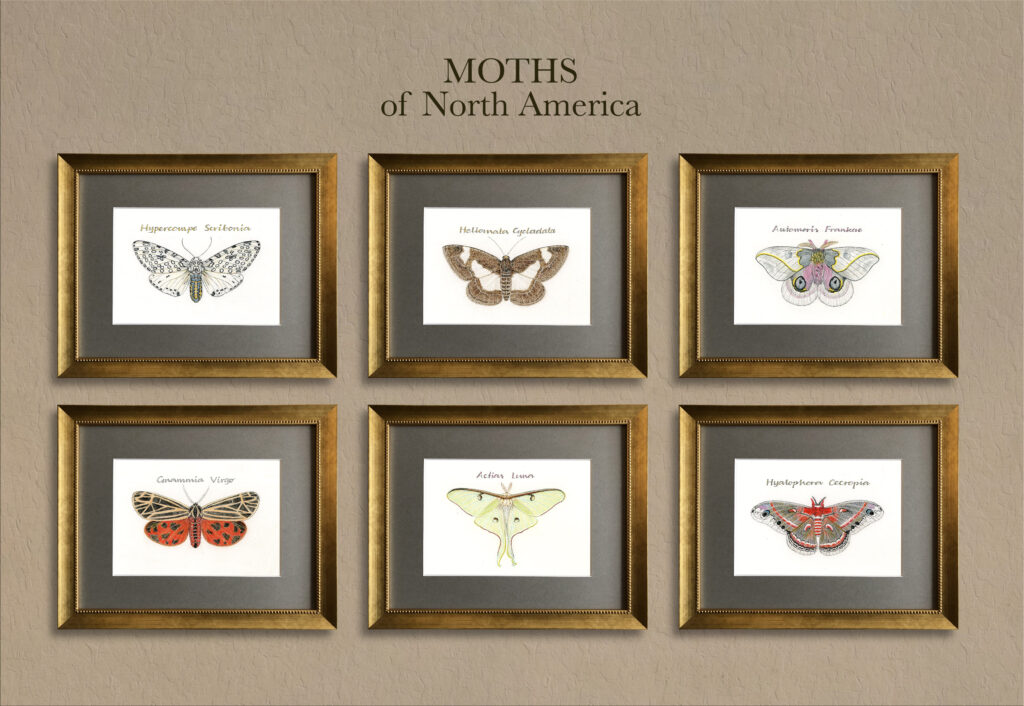
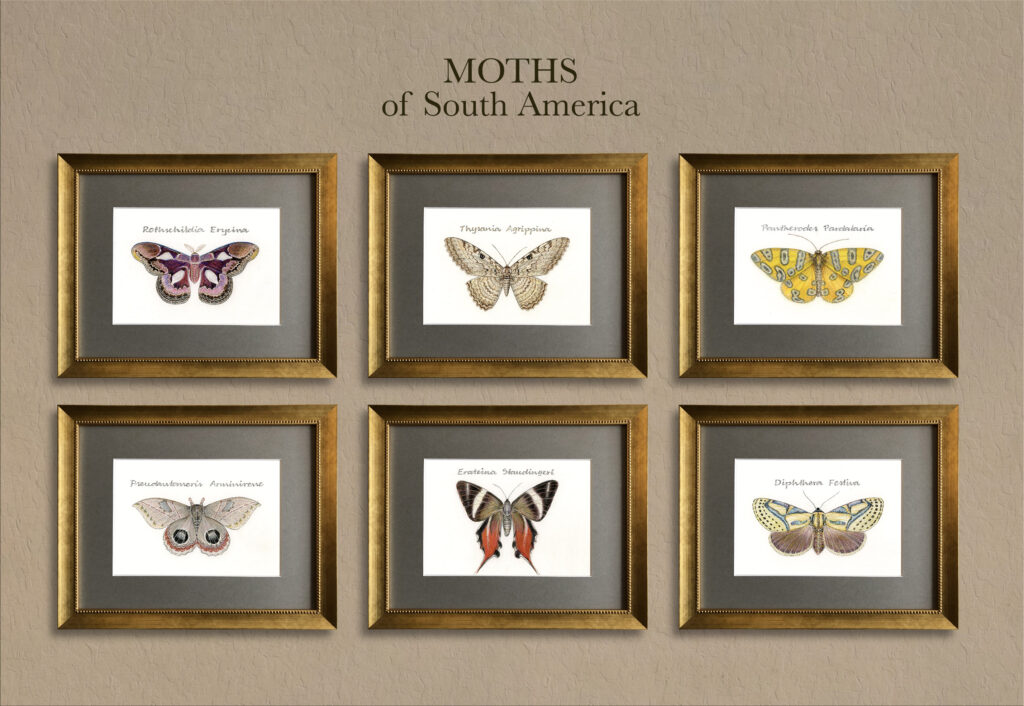
Do you need a butterfly gallery dominated by your favorite color? Or maybe a collection inspired by the design on the wings is important to you: delicate or maybe strong, or maybe you like sparing black and white patterns? So we will create special collections for you.
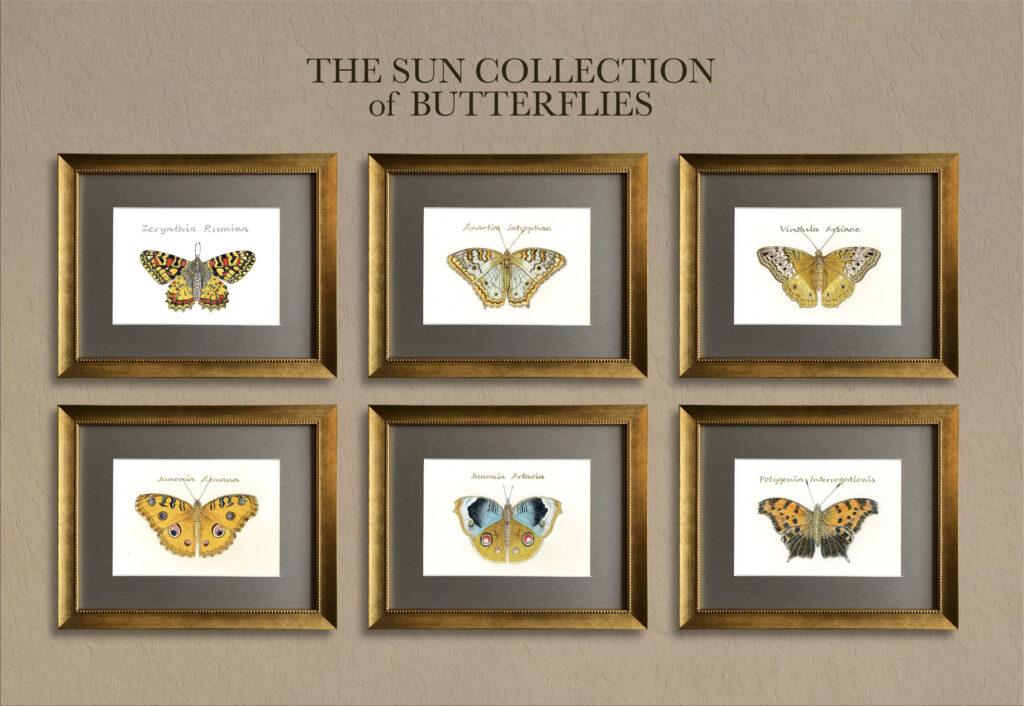
Our first special collection of butterflies from all over the World is in the color of the Sun, because in the arms of its rays life is awakened…
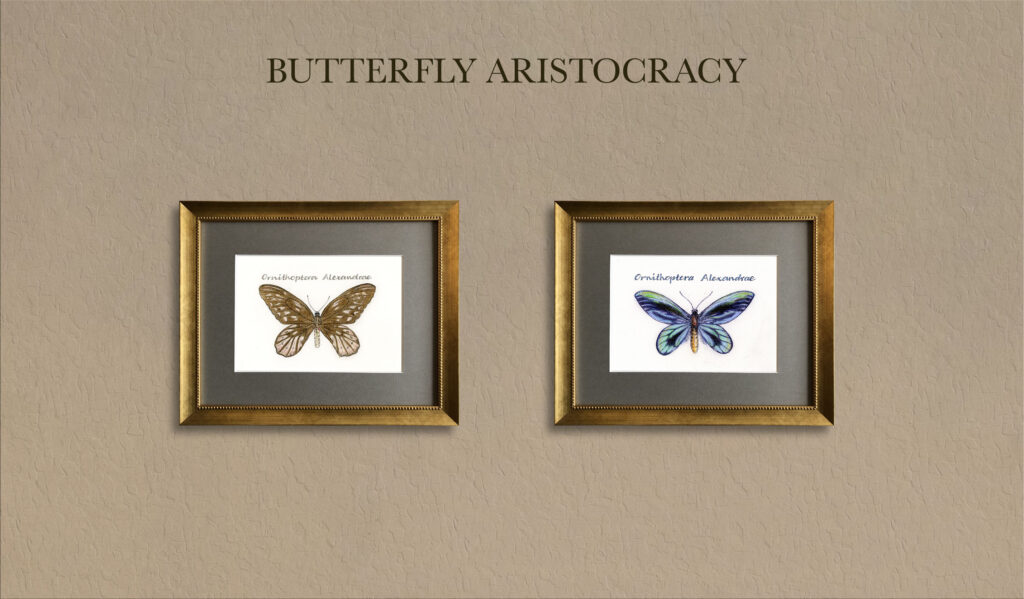
This is the Queen Alexandra Butterfly – Ornithoptera alexandrae from the swallowtail family – Papilionidae, which can boast a wingspan of up to 28 cm. It is the largest butterfly of the day in the world. It lives in the rainforests of New Guinea and it is under strict protection.
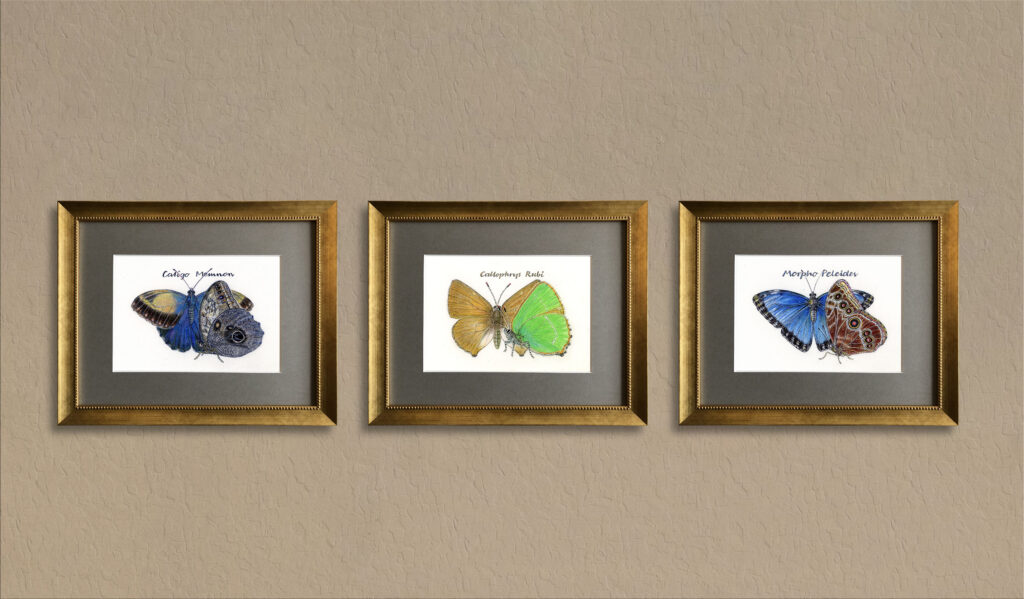

Catasticta copernicus
Nowo odkryty motyl miał zaszczyt przyjąć nazwę od nazwiska wielkiego polskiego naukowca Mikołaja Kopernika. Catasticta copernicus mieszka w górach Andach, w Peru, na wysokości 3.500 m. W trudnej międzynarodowej ekspedycji naukowej wzięli udział naukowcy z Uniwersytetu w Lund w Szwecji, Uniwersytetu Jagiellońskiego w Krakowie i Peruwiańska Armia.
The newly discovered butterfly was honored to be named after the great Polish scientist Nicolaus Copernicus.